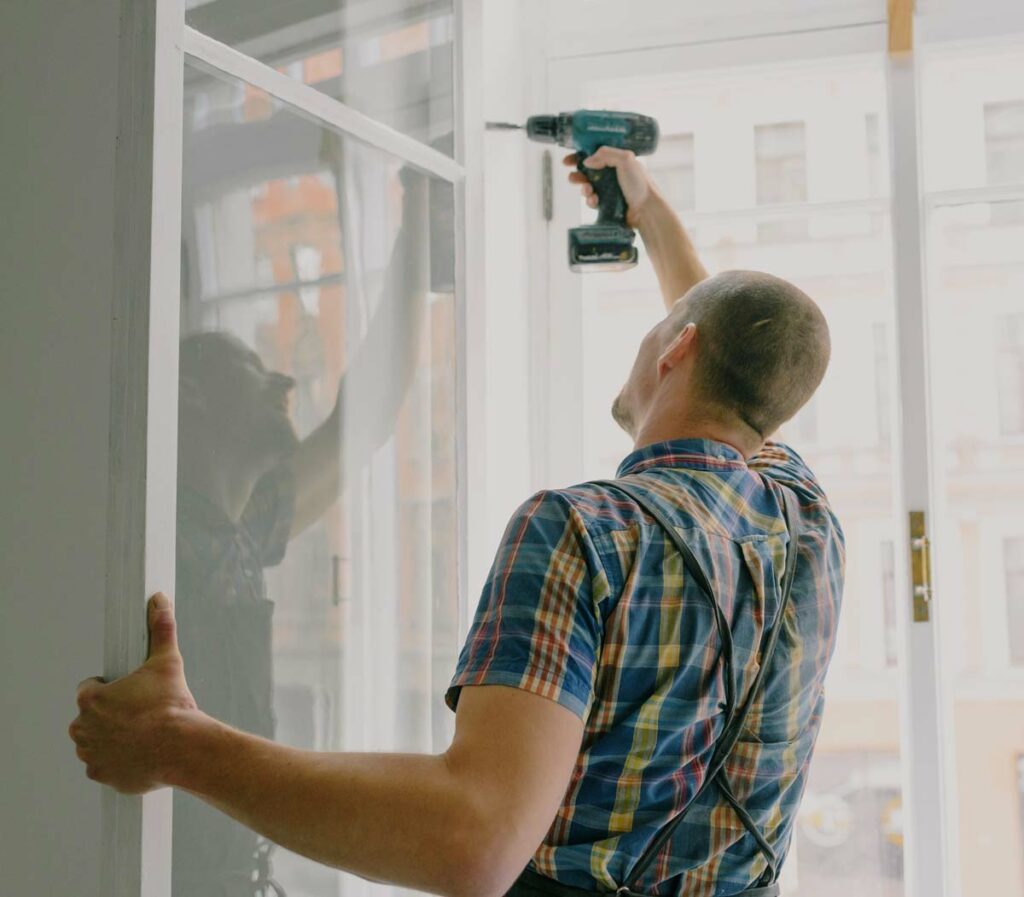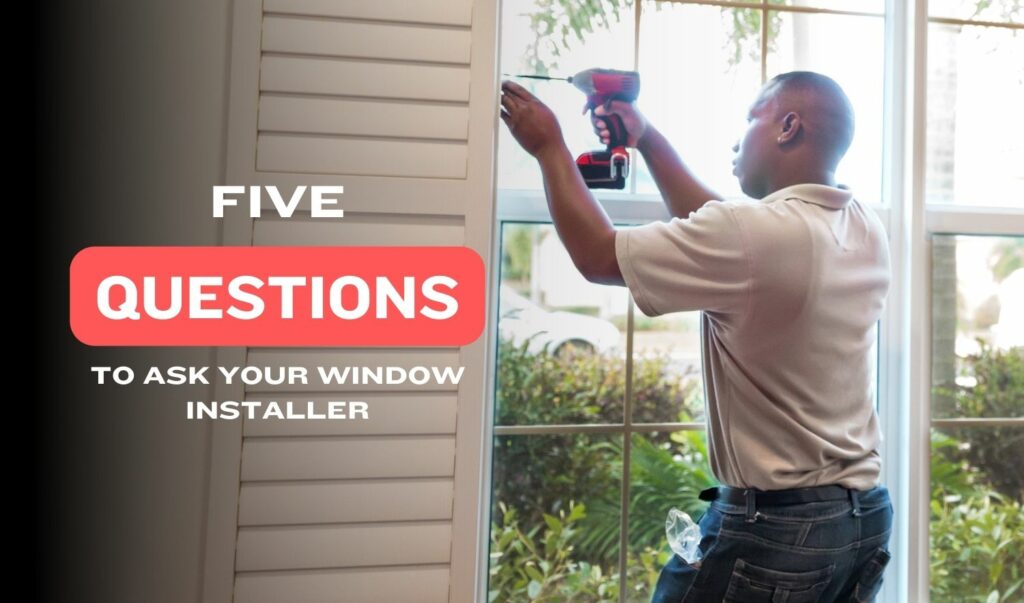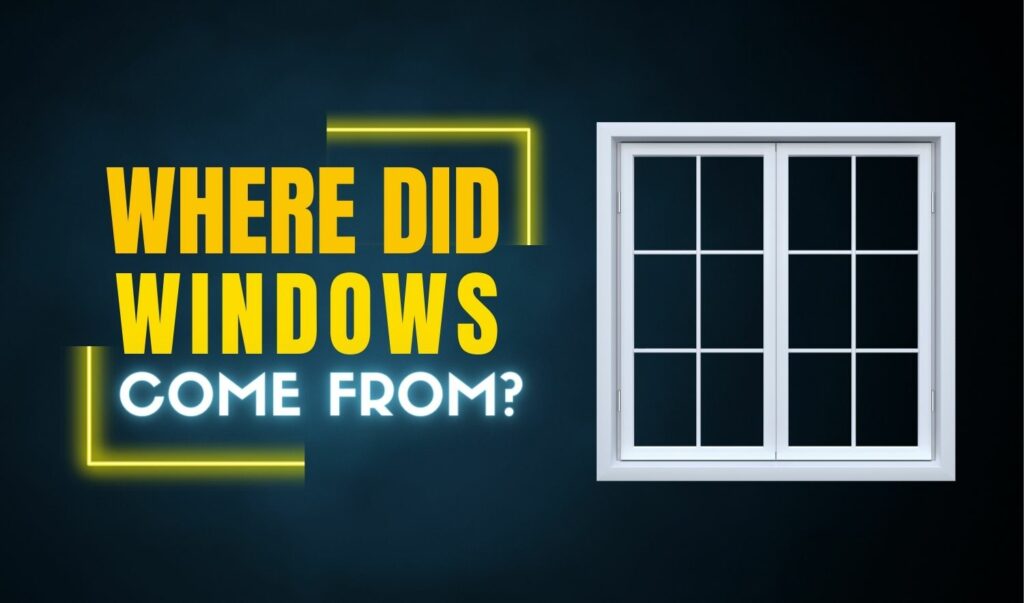Ultimate Guide to Replacement Windows for Homeowners in Greenville, SC. When it comes to replacement windows here in Greenville SC, Columbia SC, Asheville SC or Charleston SC, homeowners have a plethora of options to consider. Not only can these new window installations improve the overall aesthetic appeal of your home, but they can also significantly increase energy efficiency and reduce utility costs. In this comprehensive guide, we will explore various aspects of selecting and installing replacement windows that cater to both form and function.
We’ll delve into the benefits of investing in Energy Star-qualified windows and discuss available federal tax credits for energy-efficient window installations. Furthermore, we’ll examine essential factors such as U-factor measurements, visible transmittance values, glass technology advancements, frame materials choices like sash-only kits for cost-effective solutions.
In addition to technical considerations when replacing windows, we will highlight how proper attic wall insulation and weatherstripping sealants play a crucial role in enhancing your home’s thermal envelope. Lastly, learn how you can maximize resale value by matching your home’s architectural style with aesthetically pleasing yet efficient window panes and frames.
Energy-Efficient Replacement Windows
Installing energy-efficient replacement windows can lower your energy bills by 7 to 15 percent, making your home quieter and more comfortable. Look for Energy Star-qualified models that may qualify you for a federal tax credit, further defraying the cost of window replacement while contributing to long-term savings on your energy bill.
Benefits of Investing in Energy Star-Qualified Windows
- Savings: By reducing heat transfer between indoor and outdoor environments, these windows help maintain consistent temperatures inside your home, leading to reduced heating and cooling costs.
- Noise reduction: High-quality insulation materials used in Energy Star-rated windows provide better soundproofing than standard options.
- Eco-friendly: Using less energy not only saves money but also reduces greenhouse gas emissions associated with electricity production from fossil fuels.
- Durability: These windows are built with high-performance materials designed to withstand harsh weather conditions without compromising their efficiency or appearance over time.
Federal Tax Credits Available for Energy-Efficient Window Installations
The U.S. The RRETC provides a tax credit for investments in renewable technologies such as solar panels and geothermal heat pumps, though it does not directly apply to window replacements. While this specific tax credit does not apply directly to window replacements, there are other programs available at both state and local levels that may provide financial assistance for energy-efficient home improvements. To find out if you’re eligible, visit the Database of State Incentives for Renewables & Efficiency (DSIRE) and search by your location.
In conclusion, replacing windows with energy-efficient models is a smart decision for homeowners looking to save money on their utility bills while also improving the comfort and value of their homes. By choosing Energy Star-qualified models and taking advantage of available tax credits or incentives, you can maximize the benefits provided by these high-performance window panes and frames. Double-hung windows and double-pane glass are great options to consider when replacing windows.
Replacement windows that are Energy Star-qualified can provide significant energy savings and improved comfort in your home. To ensure the best performance, it is important to consider all window features when selecting replacement windows for your home.
Key Takeaway:
Replacing old windows with energy-efficient ones can lead to lower energy bills, improved comfort and noise reduction in the home. Homeowners should look for Energy Star-qualified models that offer long-term savings on their utility bills and may also qualify them for federal tax credits or state-level incentives. Double-hung windows and double-pane glass are recommended options to consider when replacing windows.
Choosing the Right Window Features
When selecting new windows for your home, it’s essential to focus on features that add value and improve performance. When selecting replacement windows, take into account such aspects as energy efficiency, maintenance requirements and durability. This article will delve into some of the characteristics that can upgrade your home’s comfort and operation.
Importance of U-factor Measurements and Visible Transmittance Values
The U-factor is a measurement of how well a window insulates against heat transfer. A lower U-factor implies better insulation, making your abode cooler in the summer and warmer during winter. Visible Transmittance (VT) measures how much natural light passes through a window; higher VT values indicate more daylight entering your living spaces.
- Energy Star-qualified windows: Look for models with low U-factors (0.30 or less) and high VT ratings to maximize energy savings while maintaining ample natural light.
- Glass coatings: Low-Emissivity (Low-E) coatings reduce solar heat gain by reflecting infrared radiation away from your home without blocking visible light transmission; they’re an excellent choice for improving both insulation performance and daylighting capabilities.
Upgrades That Can Significantly Enhance Overall Efficiency
Beyond basic energy-efficient features like Low-E glass coatings or double-pane construction, there are additional upgrades you may want to consider when purchasing replacement windows:
- Inward tilting double-hung windows: These designs allow both sashes to tilt inward for easy cleaning, reducing the need for ladders or professional window washing services. This feature is particularly useful in multi-story homes.
- Full screens: Installing full screens on your windows helps keep insects out while allowing fresh air to circulate throughout your home. Look for high-quality, durable screen materials that resist tearing and stretching over time.
- Cladding materials: Exterior cladding options like vinyl or fiberglass protect wood or composite frames from weathering and require minimal maintenance compared to traditional painted surfaces. These materials can also improve insulation performance by creating a more effective thermal barrier between indoor and outdoor environments.
In conclusion, choosing the right features when selecting replacement windows can significantly impact their overall efficiency, durability, and ease of maintenance. By considering factors such as U-factor measurements, visible transmittance values, and additional upgrades like tilting sashes or exterior cladding materials, you’ll be well-equipped to make an informed decision that enhances both your home’s comfort level and long-term value.
Selecting the appropriate window characteristics is critical to guaranteeing your replacement windows are as economical and efficient as feasible. By understanding glass technology, frame materials, and other upgrades available for your new windows, you can make an informed decision about which type of window will best meet your needs.
Key Takeaway:
When choosing replacement windows, it’s important to focus on features that add value and improve performance. Key factors to consider include energy efficiency, ease of maintenance, and durability. Look for low U-factors and high VT ratings in Energy Star-qualified windows with Low-E glass coatings or double-pane construction, as well as additional upgrades like inward tilting double-hung windows, full screens, and cladding materials to enhance overall efficiency.
Glass Technology & Frame Materials
Modern glass technology has significantly improved the insulation capabilities of windows, making them more energy-efficient than ever before. One major advancement in this area is the introduction of dual-pane or double-pane layers, which are designed to minimize heat transfer between your home’s interior spaces and outdoor environments. This innovative design provides better insulation compared to traditional single-pane windows, ultimately helping you save on heating and cooling costs.
When it comes to frame materials, homeowners have several options that offer varying levels of durability and energy efficiency. Two popular choices include:
- Insulation-filled vinyl frames: These frames are made from a durable plastic material that can be filled with insulation for added thermal performance. Vinyl is low-maintenance, resistant to weathering, and generally more affordable than other framing options.
- Fiberglass frames: Known for their strength and longevity, fiberglass window frames provide excellent insulating properties while requiring minimal upkeep. Although they tend to be pricier than vinyl alternatives initially, their long-term benefits often outweigh the upfront cost difference.
In some cases where existing window frames are still in good condition but require an upgrade in terms of glass technology or aesthetics, homeowners may opt for a sash-only replacement kit. This cost-effective solution involves replacing only the sashes (the part of the window that holds the glass) rather than installing entirely new units.
Sash-Only Replacement Kits as a Cost-Effective Solution
If you’re looking for an affordable way to improve your home’s energy efficiency without committing to full-scale window replacements, sash-only kits might be the perfect solution. These kits allow you to replace just the sashes in your existing window frames, which can significantly improve insulation and overall performance without breaking the bank.
When considering a sash-only replacement kit, it’s essential to ensure that your current window frames are still structurally sound and capable of accommodating new sashes. A window replacement specialist can provide advice on whether this type of sash-only kit is the right choice for your residence, considering any structural issues with existing frames and other factors.
Glass technology and frame materials are essential for the successful installation of replacement windows, as they determine the level of insulation, security, and energy efficiency. When properly combined with other elements like attic wall insulation and weatherstripping sealants, homeowners can be sure that their home’s thermal envelope is enhanced to its fullest potential.
Key Takeaway:
Modern glass technology has improved the insulation capabilities of windows, with dual-pane layers minimizing heat transfer and reducing heating and cooling costs. Homeowners have options for frame materials, including vinyl frames filled with insulation or fiberglass frames known for their strength and longevity. Sash-only replacement kits can be a cost-effective solution to improve energy efficiency by replacing just the sashes in existing window frames if they are still structurally sound.
Enhancing Your Home’s Thermal Envelope
To get the most out of your new windows, invest in attic wall insulation, weatherstripping sealants, and upgrading your home’s overall thermal envelope alongside replacing inefficient or damaged windows. This ensures reduced drafts and heat loss throughout the entire structure while complementing the benefits provided by modern window technologies.
The Importance of Proper Attic Wall Insulation
Attic wall insulation plays a crucial role in maintaining a comfortable indoor temperature and reducing energy consumption. Insulating your attic walls can help to retain the temperature inside, stopping warm air from getting away in winter and keeping cool air within during summer. There are various types of insulation materials available on the market, such as fiberglass batts, cellulose loose-fill, spray foam insulation or rigid foam boards. Each material has its own advantages depending on factors like climate conditions and budget constraints. For more information about selecting appropriate attic wall insulation for your home, check out this guide by Energy.gov.
Weatherstripping Sealants’ Role in Reducing Drafts and Heat Loss
Weatherstripping is another essential component to consider when enhancing your home’s thermal envelope with replacement windows installation. Weatherstripping sealants help create an airtight barrier around doors and windows that prevents drafts from entering living spaces while keeping conditioned air inside where it belongs.
- V-strip: Also known as tension seals or V-channel weatherstrip; these flexible strips made from plastic or metal are effective at sealing gaps along sides of double-hung windows.
- Foam tape: A self-adhesive strip made from open-cell polyurethane foam which is ideal for sealing irregularly shaped gaps and cracks around windows.
- Door sweeps: A strip of aluminum or stainless steel with a brush, rubber, or vinyl seal that attaches to the bottom edge of doors to prevent drafts from entering under the door.
To learn more about different types of weatherstripping materials and their applications, visit this comprehensive guide by Energy.gov.
In addition to attic wall insulation and weatherstripping sealants, other measures like air sealing your home’s exterior walls can further enhance its thermal envelope. Air sealing involves filling any gaps or cracks in your home’s building envelope where conditioned air may escape. For detailed information on how to conduct an energy audit and identify areas requiring air sealing improvements, consult this helpful resource by Energy.gov.
By investing in proper attic wall insulation and weatherstripping sealants, you can ensure that your home’s thermal envelope is properly protected from drafts and heat loss. Moving on to aesthetics and return on investment, it is important to consider how the replacement windows will match with your home’s architectural style as well as maximize its resale value.
Key Takeaway:
Investing in attic wall insulation and weatherstripping sealants alongside replacing inefficient windows can enhance your home’s thermal envelope, reducing drafts and heat loss. Attic wall insulation plays a crucial role in maintaining indoor temperature while weatherstripping sealants create an airtight barrier around doors and windows to prevent drafts from entering living spaces.
Aesthetics & Return on Investment
Finding a harmonious combination of attractive design and practical features is key when choosing new windows for your home. Not only do you want your new windows to enhance the overall appearance of your house, but they should also provide modern features that improve energy efficiency and performance. By carefully considering both aspects during the selection process, you can maximize the return on investment (ROI) when selling your home – with some studies suggesting up to an 80% ROI from window replacements.
Matching Your Home’s Architectural Style with Replacement Windows
To ensure that your new windows complement the architectural or historical character of your house, take note of its design elements such as color schemes, trim details, and other unique features. Here are some popular architectural styles and their corresponding window types:
- Craftsman: Double-hung or casement windows with grille patterns mimicking traditional divided-lite designs.
- Tudor: Tall casement windows featuring diamond-shaped leaded glass panes.
- Ranch-style: Sliding or double-hung windows offering expansive views while maintaining clean lines.
- Victorian: Bay or bow windows adorned with decorative trims and intricate grille patterns.
For guidance on selecting the best window style for your home’s architecture, consult a professional designer or architect.
Maximizing Resale Value Through Strategic Window Choices
Beyond matching aesthetics, consider investing in high-quality materials and energy-efficient features that can boost your home’s resale value. Some strategic choices include:
- Energy Star-qualified windows: These energy-efficient models not only lower your utility bills but may also qualify you for federal tax credits, making them an attractive selling point to potential buyers.
- Durable frame materials: Opting for low-maintenance and long-lasting materials like vinyl or fiberglass ensures that your new windows will stand the test of time and appeal to future homeowners.
- Innovative glass technology: Double-pane windows with Low-E coatings minimize heat transfer, providing improved insulation and comfort while reducing energy costs.
When selecting replacement windows, consider aspects such as low-maintenance and long-lasting materials, double panes with Low-E coatings for improved insulation and energy efficiency in order to optimize both short term savings on bills and future gains from increased property value. To learn more about different window styles, types, shapes, and sizes, visit one of Taylors Windows showrooms in Greenville SC or Columbia SC and see life size examples and features of our replacement windows.
Key Takeaway:
When selecting replacement windows, it’s important to balance aesthetics and functionality for maximum return on investment. Consider matching your home’s architectural style with appropriate window types and investing in high-quality materials such as Energy Star-qualified windows, durable frame materials, and innovative glass technology to boost resale value.
FAQs in Relation to Replacement Windows
Does Replacing Windows Make a Difference?
Yes, replacing windows can significantly improve your home’s energy efficiency, comfort, and aesthetics. High-quality replacement windows with Energy Star qualifications can reduce heat loss in winter and keep your home cooler in summer. They also help lower utility bills and increase the resale value of your property.
How Much Should You Spend on Replacement Windows?
The cost of replacement windows varies depending on factors such as window type, materials used, installation complexity, and regional labor rates. On average, homeowners spend between $600 to $1,200 per window for both product and installation costs. It is essential to balance quality with affordability while considering long-term benefits like energy savings.
What Is the Most Common Replacement Window?
Double-hung windows are the most common type of replacement window due to their versatility and ease of use. These windows have two sashes that slide vertically within the frame allowing for excellent ventilation control. Other popular options include casement windows (which open outward) and sliding or gliding horizontal-sash styles.
How Much Window Do You Lose with Replacement Windows?
With full-frame replacements where existing frames are removed entirely before installing new ones, there might be a slight reduction in glass area by about 10%. However, if using insert or pocket replacements that fit into existing frames without removing them, any loss would be minimal or negligible.
Is It Worth Replacing Windows Yourself?
While DIY window replacements may save money upfront on labor costs, improper installations could lead to air leaks resulting in higher energy bills over time or even water damage issues down the line requiring costly repairs later on which outweigh initial savings made from doing it yourself. It is generally recommended to hire a professional installer for optimal results.
Conclusion
In conclusion, investing in energy-efficient replacement windows can provide numerous benefits such as reducing energy costs and increasing home value. Choosing the right window features, glass technology, and frame materials can significantly enhance overall efficiency. Additionally, enhancing your home’s thermal envelope through proper insulation and weatherstripping sealants can further reduce drafts and heat loss.
When it comes to aesthetics and return on investment, it is crucial to match your home’s architectural style with replacement windows. By making strategic window choices, you can maximize resale value while improving your home’s functionality.
If you’re looking for high-quality replacement windows that meet all of these criteria, contact Taylor’s Windows today for a FREE Design consultation! Taylors Windows has four locations to serve you in Greenville SC, Columbia SC, Asheville NC and Charleston SC.




